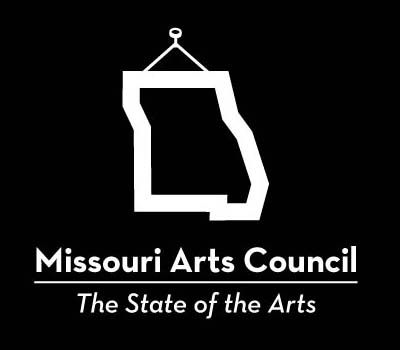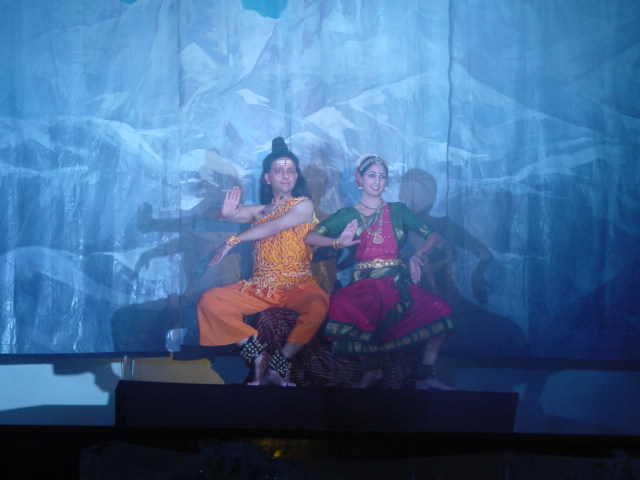
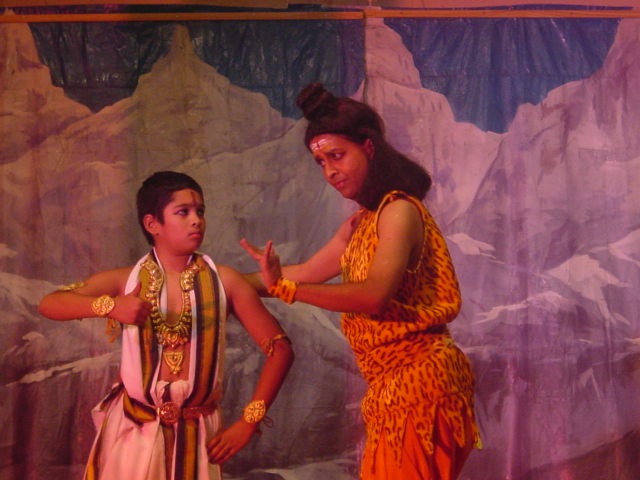
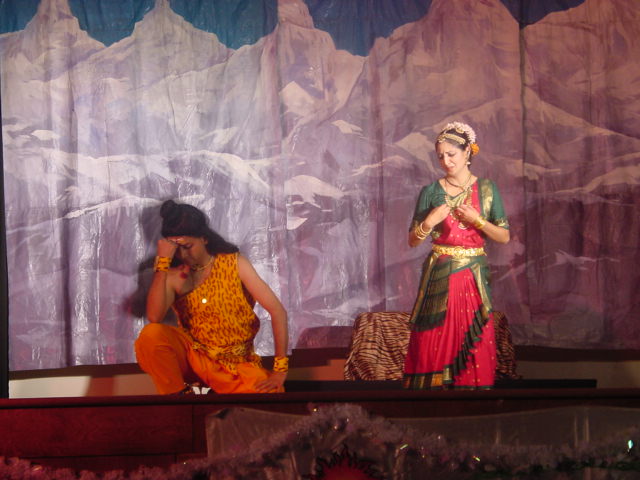
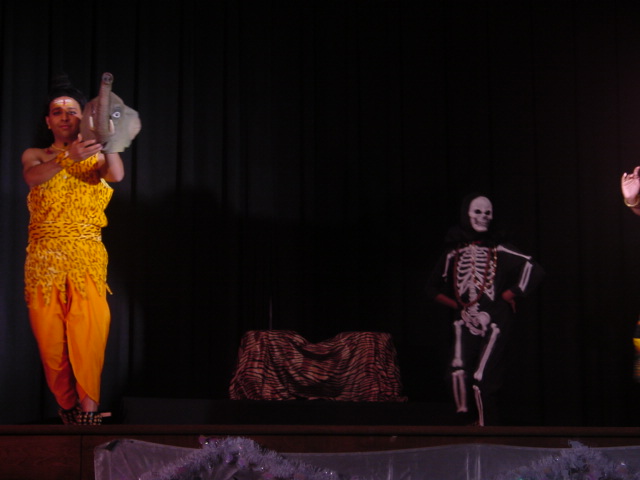
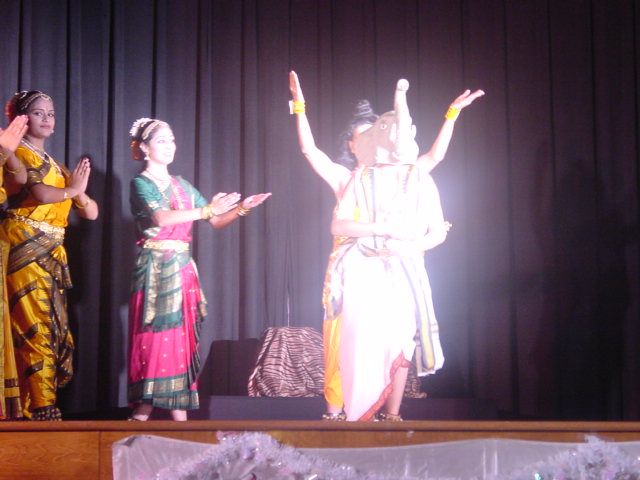
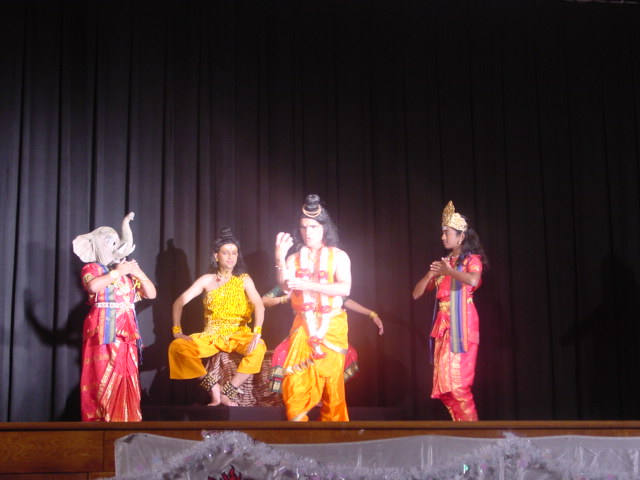
Om Ganesha
October 10th 2009 - 7:00 PM - History Museum, St. Louis, MO
Nritya Naatika (Dance Drama)
In the Hindu religion, Ganapati, the elephant headed god,
is worshipped as a deity who removes the obstacles of
life. Ganapati worship is traditionally performed before
the beginning of any task. Stories about Ganapati are
both intellectually engaging and replete with lessons of
morality.
Scene 1
Prarambha
Pushpanjali: The dancers will offer floral respects to
Lord Nataraja, the deity of dances and invite the patrons
to the dance drama.
Siddhi Vinayakam: A sanskrit composition praising Lord
Ganesha and seeks his blessings for a successful
performance
Nritya Swara vistara: A creative dance set to an
improvisation of melody
Scene 2
Ganesha Janana (Ganapati's Birth)
Shiva and Parvati, the Universal parents, are in Kailasa.
Shiva heads out to complete a task. Parvati creates a
young boy with her spiritual energy in Shiva's absence
and orders him not to allow anyone inside the home until
she completes her meditations. The young boy guards the
entrance to the home with great vigilance. When Shiva
returns home, he sees an unknown, but handsome kid at his
doorstep. Acting on his mother Parvati's instructions,
the boy refuses to let him enter. Shiva asks his Ganas,
(subordinates), to remove the boy from the door so that
he may enter. The boy repels all attempts and defeats the
Ganas. Angered, Shiva himself engages the young boy in a
battle,
beheading him in the process. Parvati emerges from her
meditation to find her son dead. Upon learning that he
has killed his own son, Shiva is full of remorse and
gives life back to the young boy, using the head of an
elephant.
Scene 3
Buddhi Ganapati (The "Wise" Ganesha)
When Sage Narada visits their home with a mango fruit,
both Ganapati and brother Shanmukha vie for it. Narada
offers to give the fruit to one of them throwing a
challenge.The challenge is to circle the world three
times within short time. Shanmukha, who is slim and
strong, rides out on his fleet vehicle - a peacock - to
circle the world with great speed. Ganesha, larger of
girth and slower of speed on his vehicle - a mouse,
wisely circles his parents three times. For him, his
parents are his world. Narada is thrilled by Ganesha's
wisdom and declares him the winner.
Scene 4
Krodha Ganapati (The "Angry" ganesha)
Chandra (Moon), is very proud of his beauty. He ridicules
Ganesha's unusual physique and his vehicle - the mouse.
Ganapati is angered by Chandra's audacity and hurls a
curse on him: "Chandra will not shine and be in
eternal darkness". Chastened, Chandra repents and
offers his apologies. Ganesha is somewhat placated and
modifies his curse to allow the moon to wax and wane,
thereby allowing it to shine on some nights.
Scene 5 - Jugalbhandhi
Tillana/Tarana is "Nritta" or pure dance. It
portrays complex movements set to a fixed rhythm and
melody. It combines multiple "adavu" (rhythmic
foot movements) variations with full body movements.
Kathak and Bharathanatyam styles are nicely collaborated
in this piece providing a glimpse of two classical styles
of India at the same time.
Music
Direction
Tirumale Srinivasan
Recording
Prabhath Studios, Bangalore, India
Photo & Video Courtesy
Deb Bhattacharya
Co-Ordination from India
Guru Pulikeshi Kasthuri
Direction & Choreography
Guru Prasanna Kasthuri
